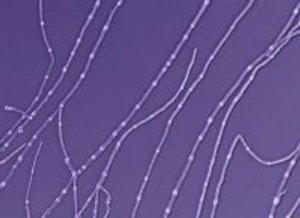
Thielavia terrestris is a novel microorganism in several respects. First, it is one of a limited number of eukaryotic species that are classified as thermophiles, having a maximum growth temperature at or above 50°C and an inability to grow below 20°C. Second, by virtue of its ability to return carbon in biomass polysaccharides to the atmosphere as carbon dioxide, T. terrestris plays an important role in the global carbon cycle. Third, cellulases and hemicellulases from T. terrestris have been shown to possess superior catalytic and stability characteristics that make them attractive candidates for industrial applications involving biomass hydrolysis. Fourth, the fact that T. terrestris is phylogenetically related to the well-characterized model organism Neurospora crassa and the pathogenic fungus Chaetomium globosum will provide opportunities to garner new insights regarding the evolution and defining characteristics of thermophilic and pathogenic fungi. Collectively, these attributes strongly suggest that the genome sequence of T. terrestris will jump-start ongoing efforts on thermophilic enzymes and biomass conversion, but also enhance the value of genome sequences from other closely related organisms through comparative studies of evolution, regulatory and biochemical pathways and pathogenesis.
Genome Reference(s)
Berka RM, Grigoriev IV, Otillar R, Salamov A, Grimwood J, Reid I, Ishmael N, John T, Darmond C, Moisan MC, Henrissat B, Coutinho PM, Lombard V, Natvig DO, Lindquist E, Schmutz J, Lucas S, Harris P, Powlowski J, Bellemare A, Taylor D, Butler G, de Vries RP, Allijn IE, van den Brink J, Ushinsky S, Storms R, Powell AJ, Paulsen IT, Elbourne LD, Baker SE, Magnuson J, Laboissiere S, Clutterbuck AJ, Martinez D, Wogulis M, de Leon AL, Rey MW, Tsang A
Comparative genomic analysis of the thermophilic biomass-degrading fungi Myceliophthora thermophila and Thielavia terrestris.
Nat Biotechnol. 2011 Oct 2;29(10):922-7. doi: 10.1038/nbt.1976
References
Rosgaard et al. (2006) Efficiency of new fungal cellulase systems in boosting enzymatic degradation of barley straw lignocellulose. Biotechnol. Prog. 22:493-498.
Brown et al. (2005) Polypeptides having cellulolytic enhancing activity and nucleotides encoding same. US Patent Application Publication 2005/0191736 A1.
Breuil et al. (1986) Production and localization of cellulases and beta glucosidase from the thermophilic fungus Thielavia terrestris. Biotech. Lett. 8:673-676.
